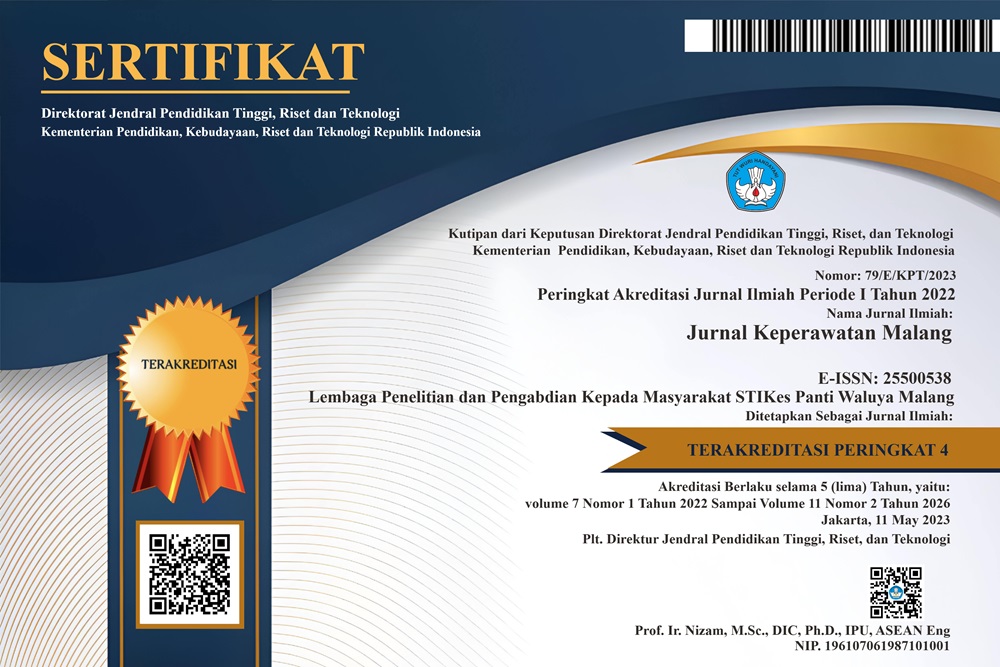APPLICATION METHOD OF PRACTICE HOLTH WINTERS EXPONENTIAL SMOOTHING ON THE NUMBER OF OCCURRENCES OF HYPERTENSION
bahasa
DOI:
https://doi.org/10.36916/jkm.v4i1.78Abstract
In the effort to see and examine the situation and conditions that occur in the future should be done forecasting. Hypertension occupies the order of the top ten diseases in the Puskesmas together and almost every month occurs a new case of hypertension, so that the incidence of hypertension become a trend and should be done forecasting. The purpose of this research is to practice the data on the number of hypertensive events in Puskesmas with the city of Malang using Holth Winters Exponential Smoothing method. The type of research used is non reactive research which is a type of research for secondary data. The sample Unit in this study is a patient who comes to medicine and is recorded as a hypertensive patient in the Puskesmas with the city of Malang. From 2013 to 2016. Research Data is processed using Minitab software. The results of this study showed the incidence of hypertension for the year 2018 decreased, with the lowest occurrence rate occurring in December of as many as 58 occurrences. The presence of a trend in the incidence of hypertension can be supported by internal factors, namely gender; and external factors, namely the environment. Outside in this study is research article, Trend morbidity graph figures incidence of hypertension disease in Puskesmas and study as teaching materials. Through the results of this research, the Puskesmas advised the party to develop planning and control of work for eradication and transmission of hypertensive disease (P2P).
References
Balitbangkes, Depkes RI. (2006). Operational Study an Immunity-Based Intervention Program On Common Major Non Communicable Disease in Depok Indonesia . Jakarta: Depkes RI.
Baradero et al (2008). Klien Gangguan Kardiovaskulear: Seri Asuhan Keperawatan. Jakarta: EGC
Bonita R. (2001). Surveillance of Risk Factors for Non Communicable Disease; The WHO Stepwise Approach. Summary. Geneva; World Health Organization.
WHO/SEARO. (2005). Surveillance of Major Non Communicable Diseases in South East Asia region. Report of an Inter Country Consultation. Geneva; WHO-SEARO.
CDC. (1991-1999). State Specific Trend in Self Report 3rd Blood Pressure Screening and High Blood Pressure. United States.
WHO-ISH. (2003). Hypertension Guideline Committee. Guidelines of The Management of Hypertension. J Hypertension
Joint National Committee on Prevention, Detection, Evaluation, and Treatment of High Blood Pressure (JNC). (2003). The Seventh Report of The JNC (JNC-7).
Departemen Kesehatan. (2004). Survei Kesehatan Nasional. Laporan Departeman Kesehatan RI. Jakarta.
Fretchling, D.c. (2001). Forecasting Tourism Demand: Methods and Strategies. Butterworth Heinemann, Oxford.
Basuki B, Setianto B. (2001). Age, Body, Posture, Daily Working Load Past Antihypertensive drug and Risk of Hypertension ; a Rural Indonesia Study. Med J Indon.
Darmojo B. (2000). Mengamati Penelitian Epidemiologi Hipertensi di Indonesia. Disampaikan pada seminar hipertensi PERKI.
Setiawan, Zamhir. (2006). Karakteristik Sosiodemografi sebagai Faktor Resiko Hipertensi Studi di Pulau Jawa tahun 2004 (Tesis). Program Studi Epidemiologi Program pasca Sarjana FKM-UI. Jakarta.
Ginsberg, Lionel (2008). Lecture Notes Neurologi. Jakarta: Erlangga
Hankey, GJ. (2002). Hipertensi: Long Term Dissability After First Ever Hipertensi And Related Prognostic Factors In The Perth Community Hipertensi Study, 1998-1990.
Kuntoro, H. (2011). Dasar Filosofis Metodologi Penelitian. Zifatama, Sidoarjo.
Makridakis, S, dkk. 1999. Metode dan Aplikasi Permalan, Jilid I edisi kedua. Jakarta: Binarupa Aksara.
Makridakis, S., Wheelwright, S. C., McGee V. E., (1992). Forecasting: Methods and Applications, 2nd edition. John Wiley & Sons Inc.
Mulyana. (2013). Penyakit Infeksius dan non infeksius http://yuzniemulyhana.blogspot.co.id/2013/10/penyakit-non-infeksi.html. 6 okt 2013. Diakses pada 3 Nopember 2017.
Tambayong, Jan (2000). Patofisiologi untuk Keperawatan. Jakarta: EGC
Wei, W.W.S. (2006). Time Series univariat and Multivariat Methods.2nd United States Of America: Pearson Education.
WHO (2008). Fact Sheet : The Top Ten causes Of Death. 28 Oktober 2017. www.who.int/mediacentre/factsheets/fs310_2008.pdf.
Wilterdink JL, Easton JD. (2001). Hipertensi Prevention In 2001. In: Bougosslavsky J. ed. Drug Theraphy For Hipertensi Prevention. London ; Taylor And Francis.
Yastroki. (2009). Hipertensi Urutan Kedua Penyebab Kematian di Indonesia, www.yastroki.or.id












